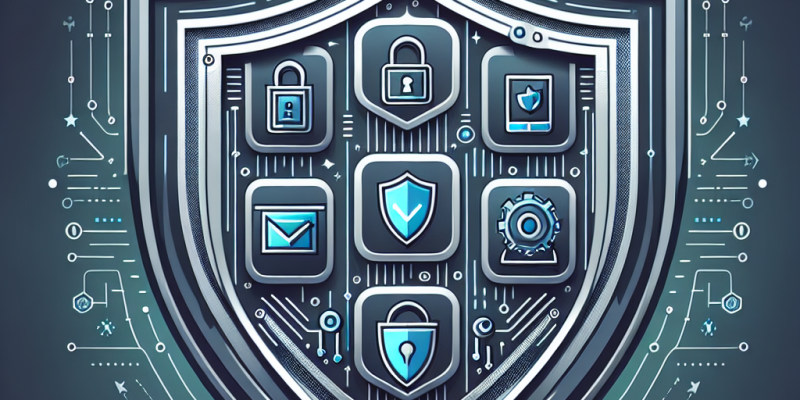Five Must-Have Tools for a Robust Cybersecurity Defense

In an increasingly digital world, protecting sensitive data and maintaining system integrity has never been more critical. Cybersecurity threats are evolving, becoming more sophisticated and damaging. Organizations must arm themselves with the right tools to defend against these threats effectively. Here are five must-have tools for establishing a robust cybersecurity defense.
1. Next-Generation Firewall (NGFW)
What it is:
An NGFW goes beyond traditional firewalls by incorporating additional features such as intrusion detection and prevention, application awareness, and deep packet inspection.
Why you need it:
With cyber threats becoming more advanced, NGFWs can identify and block suspicious activities and potential breaches before they escalate. Features like SSL inspection ensure encrypted data is not a blind spot for security teams.
Key Updates:
Recent updates to NGFW include improved machine learning algorithms for real-time threat detection and integration with cloud-based security systems, providing organizations with a unified approach to security.
2. Endpoint Detection and Response (EDR)
What it is:
EDR is a security solution that continuously monitors endpoints (like computers and smartphones) for signs of malicious activity while providing the tools necessary to respond effectively.
Why you need it:
Endpoints are often the first targets for attackers. EDR solutions can detect behavioral anomalies and respond swiftly, allowing teams to contain and remediate threats before they spread to the network.
Key Updates:
The latest EDR solutions now leverage advanced analytics and threat intelligence to identify previously unknown vulnerabilities and automate response actions based on threat severity.
3. Security Information and Event Management (SIEM)
What it is:
SIEM software collects and analyzes security data from across your organization, providing real-time insights into security incidents, compliance, and threats.
Why you need it:
With a plethora of security events generated daily, SIEM tools are crucial for identifying patterns indicative of a cyber threat. They help in streamlining incident response and supporting compliance reporting.
Key Updates:
Recent advancements in SIEM tools involve enhanced AI and machine learning capabilities for predictive analysis, allowing security teams to anticipate and mitigate risks proactively.
4. Identity and Access Management (IAM)
What it is:
IAM systems manage user identities, ensuring that the right individuals have access to the right resources at the right times.
Why you need it:
Malicious actors often target credentials to gain unauthorized access. IAM tools enforce least privilege access and multi-factor authentication (MFA), significantly reducing the risk of breaches.
Key Updates:
New developments in IAM focus on user behavior analytics (UBA) and automated identity verification, enhancing security while streamlining user access and increasing productivity.
5. Threat Intelligence Platforms (TIP)
What it is:
TIPs aggregate threat data from various sources to provide organizations with actionable insights about emerging threats, vulnerabilities, and ongoing attacks.
Why you need it:
By staying informed on current threats, organizations can proactively adjust their defenses and prepare incident response plans, making them less vulnerable to attacks.
Key Updates:
The latest TIPs now offer integrations with SOAR (Security Orchestration, Automation, and Response) solutions, enabling automated threat responses based on real-time intelligence.
Conclusion
Investing in a robust cybersecurity defense requires adopting tools that are not only effective but also adaptable to evolving threats. Incorporating Next-Generation Firewalls, Endpoint Detection and Response, Security Information and Event Management, Identity and Access Management, and Threat Intelligence Platforms into your cybersecurity strategy can greatly enhance your organization’s resilience against cyber threats.
Keep your defenses updated and train your staff continually; cybersecurity is as much about tools as it is about awareness and preparedness.














